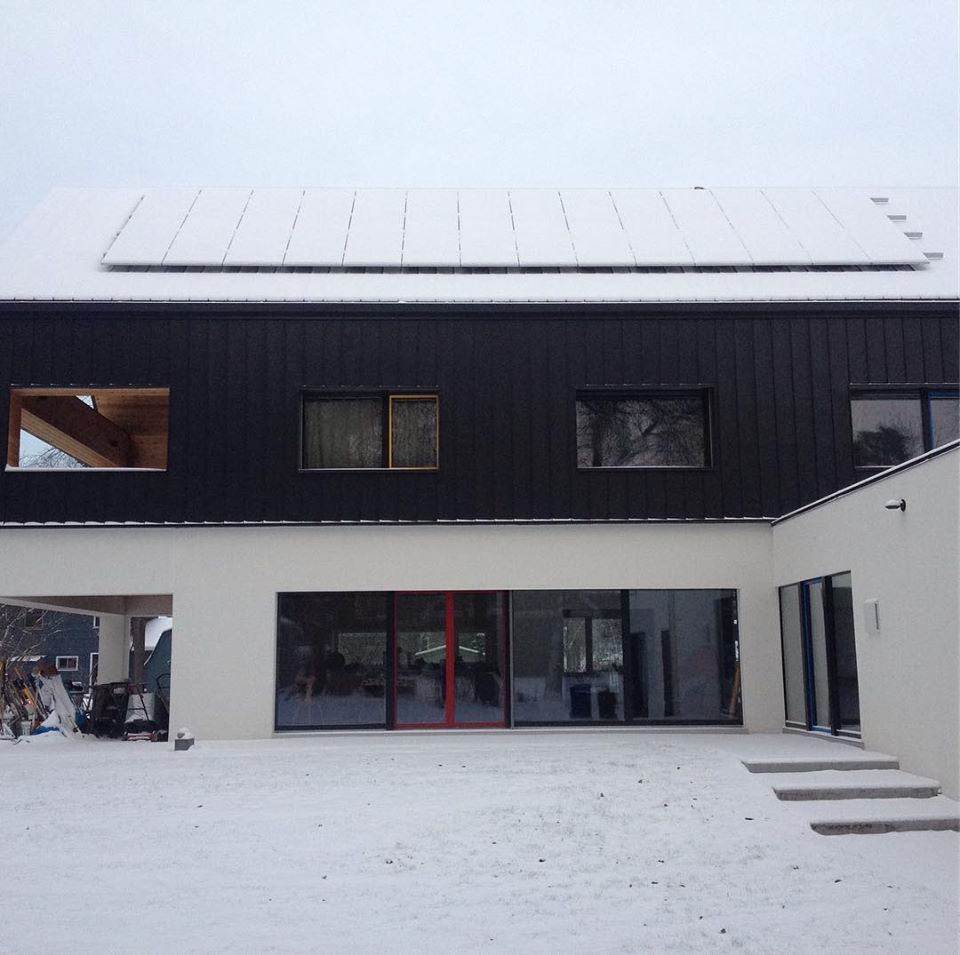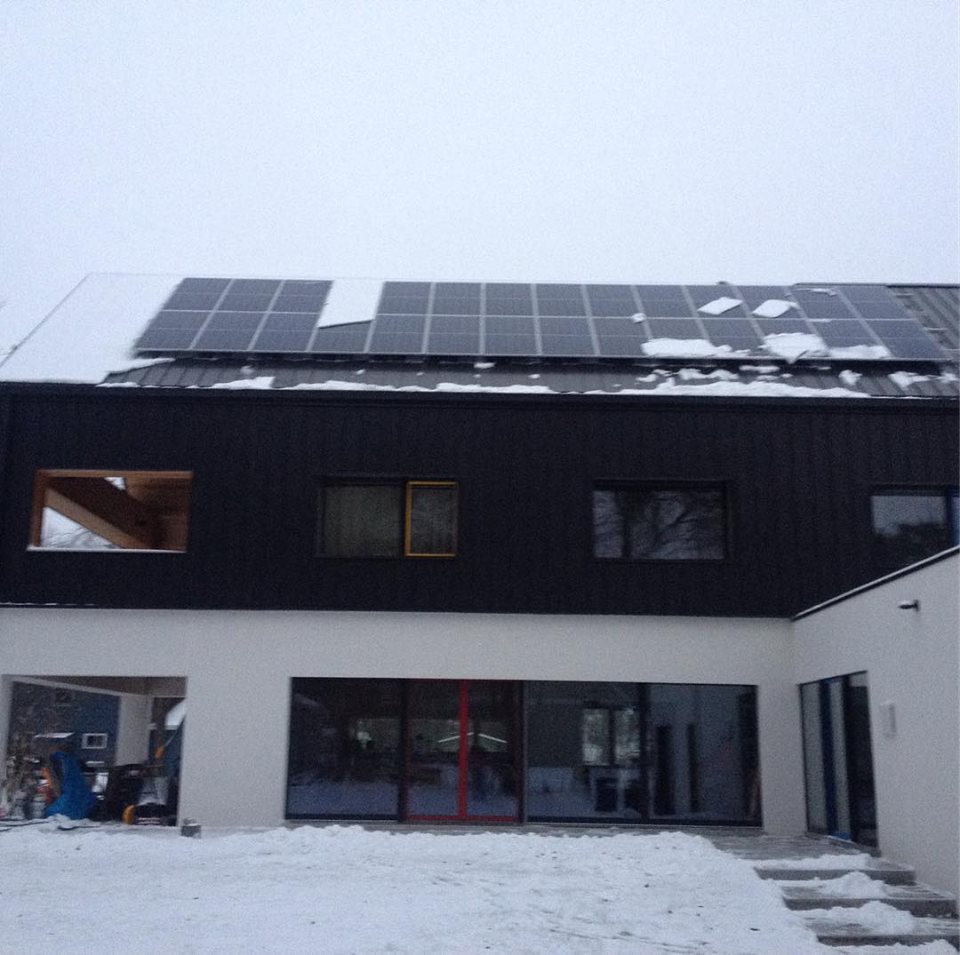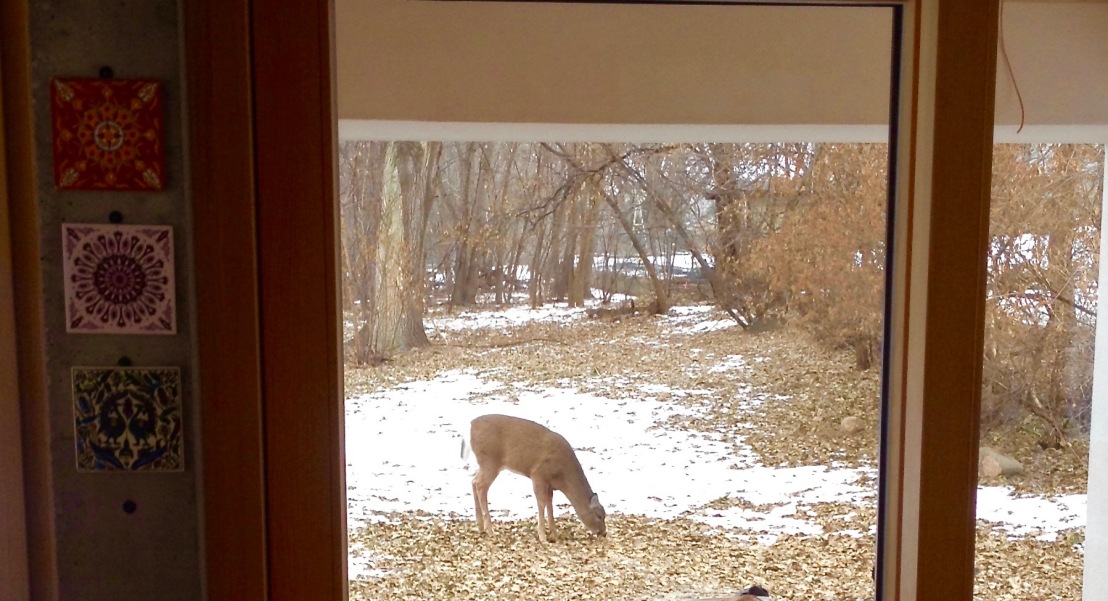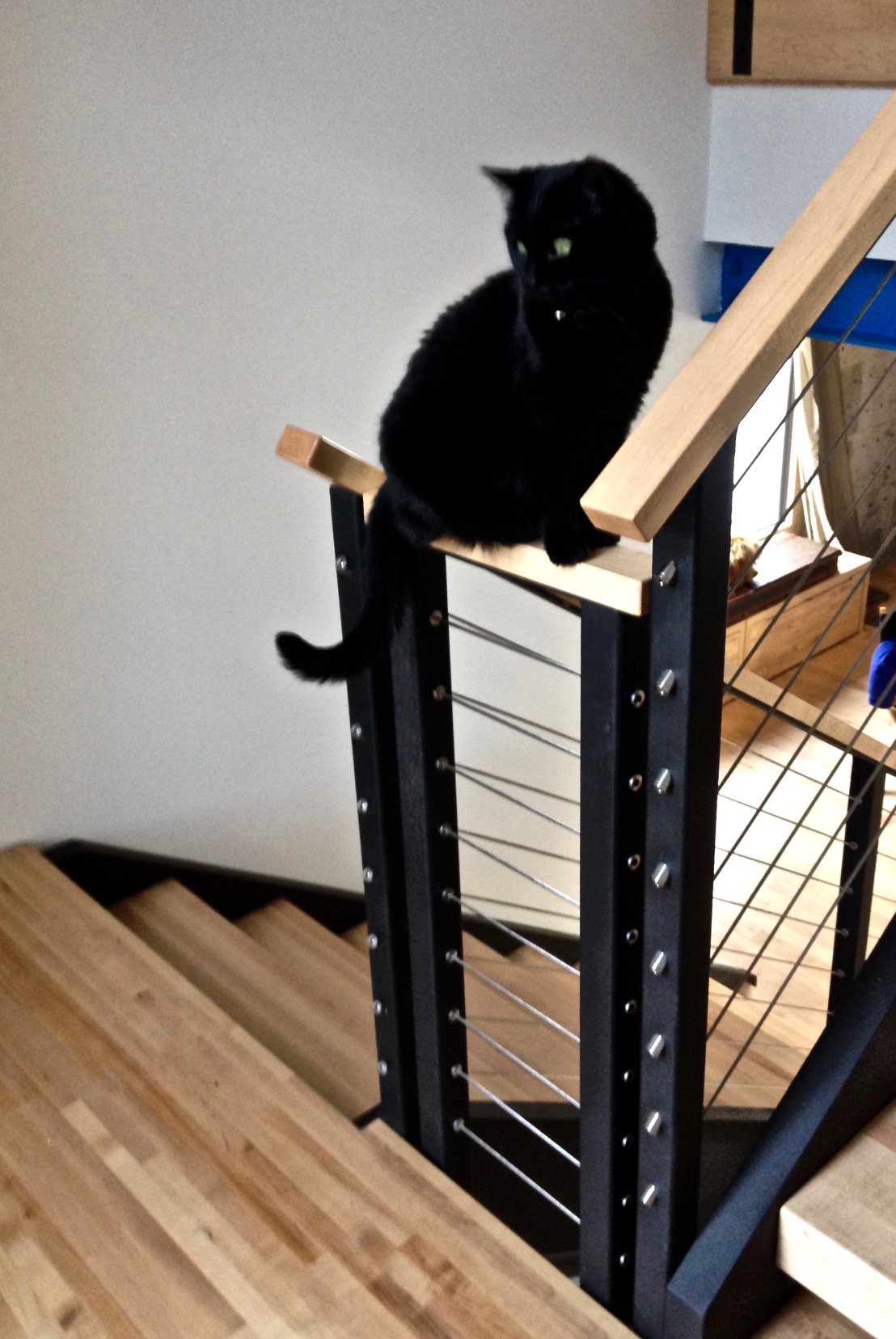
The state climatology office reported that September through the end of November of this year (2018) has been the cloudiest since 1985.
Snow and a very cloudy day have a similar effect on our solar panels.
Snowy panels+clouds <1 kWh for the day.

A little sun clears the PV fairly quickly, and warms the house. Note that the photo below shows a bit of roof to the left, still snow-covered, but the PV is mostly cleared off.
Mostly cleared PV+clouds=2.6kWh. Cloud cover significantly blocks solar energy.

September’s top production day 22nd, at 56kWh. October’s top was 36, November’s was 33. In December, we get excited to see double digit numbers, with 21 the peak.
The system is capable of generating up to ~9 kW per hour. We get sun between 7:45-4:15 this time of year, so in theory a sunny day MIGHT generate 8 hours of sun energy. This does not happen in practice.
Below photos are January 5th (left) and October 16th (right) shadows in early afternoon. October has leaf shadowing, and only reaches the bottom row of panels. January’s low sun angle makes shadows reach across the top row of panels, with leafless branches.
The next photo shows weak sunshine indoors at 30 minutes post sunrise. That is about the time the sun hits our solar panels. By late morning, the house warms up, and with natural convection, heat rises to the attic, and cool air descends to the basement. The heating system will also collect cool basement air, warm it and redistribute it to the rest of the house.

A northern winter challenge for solar energy, whether passive heating through windows or PV energy collection is the angle of sun. Winter sun at noon is only just over our neighbor’s house, and the trees may have dropped their leaves, but the bare branches still block some of the light. All day long, it slips between branches and even a cloudless day is less productive than March – September.
Our panels (unlike the image below) are about 45 degrees, a good fit for winter sun at noon on a sunny day. (graphic: free download from “researchgate.net”)

On clear midwinter days (there were 4), our PV system produced no more than 21 kWh.
On a rainy, cloudy, snowy days, it has produce less than 1 kWh.
Minimum overnight usage is ~1/2kWh per hour of darkness. (In deep winter, ~16 hours.)
Cloudy days require heating, and grid-provided energy for power.
We’re learning how to live in this house, and how to optimize our current energy use to fit into our energy production.



